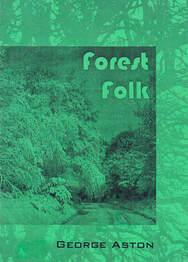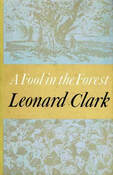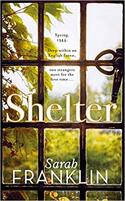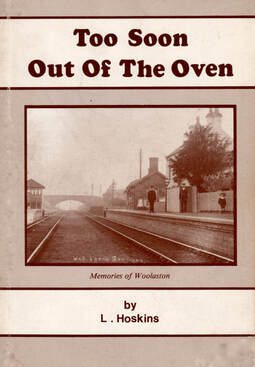World War Two in the Forest of Dean
Teacher Resources
Teacher Resources
The Home Front: changes to life in the Forest
George Aston worked in forestry and remembers how the wartime demand for timber effected the woods.
|
‘The thing that most people remember about the Forest in war time is the wholesale slaughter of timber that took place. Royal Engineers were drafted in to fell mature, and semi mature oaks over a wide area, until it looked as though nothing would remain except the mess […] The trunks were converted into timber suitable for the Army’s use, and the remainder, when cleared, into material for the mines’
©George Aston From Forest Folk (1996) by George Aston, page 91. |
The poet Leonard Clark grew up in Cinderford but he left as a young man to take up a post as a trainee teacher. He regularly returned home to see his family and always looked out for his favourite Chestnuts Wood. But during the War timber was in high demand...
|
‘Then, in 1939, the war came. I heard rumours that many of the older oak trees were suffering from heart rot which was rapidly degrading them. I heard terrible whispers that the Chestnuts Wood might have to be felled […] Not all the acres of oak and chestnut were cut down at once. Felling went on steadily, as timber was needed, throughout the years of the war […] In the summer of 1945 I went home again. I was determined to find out the worst for myself. And so I stood once again on my childhood heights and looked around me. There stood the jagged Cotswolds, the meadows of corn waving below, Severn glinting, the needle-points of the scattered churches, and most comforting of all, the calm while glory of Gloucester Cathedral tower. Yes, it was all there as it had always been. And then I turned my eyes to the left of the familiar landscape. There, to my horror, I saw a bald hill with just a thin ring of trees on top. My eyes flooded with tears […] Seventy acres of forest had gone and, with it, I felt that my roots had been pulled up. I cannot begin to calculate how much of my life went with the destruction of those trees.’
©Leonard Clark From A Fool in the Forest (1965) by Leonard Clark, page 10-11 |
With the men away at war, or working in the coal mines, women took on jobs that had traditionally been done by the men.
‘Within days of the outbreak of war, the order was issued that all women over the age of eighteen should register for work. Most able bodied men would be needed in the forces, and their places on the land, in the forests and in factories had to be filled by capable women.’
©George Aston
From Forest Folk (1996) by George Aston, page 105.
©George Aston
From Forest Folk (1996) by George Aston, page 105.
At the age of seventeen Alberta Winn joined the Women's Timber Corps in 1942, and after her training was posted to the Forest of Dean. Here she recalls the work she did:
‘“My day’s work started at 7.00am in the woods near Mitcheldean, to which place I was transported in the foreman’s van. I soon realised how little I had learned from my month’s training, but which would be obtained from the old Foresters. I think they took a poor view on us at first, because women working in the woods was something new to them, and they thought us a bit stupid. However we soon won their praises by our hard work; and hard work it was. As time went on and we had to travel from place to place, we were issued with black “sit up and beg” bikes; real bone shakers, but so useful for work and pleasure. At one stage we were sent to Chestnuts Wood near Littledean […] The Chestnuts Wood operation was a very full time job. We measured felled timber, counted pit props, measured cordwood and brush burning.”’
©George Aston
From Forest Folk (1996) by George Aston, page 103.
©George Aston
From Forest Folk (1996) by George Aston, page 103.
|
Sarah Franklin's novel Shelter (2017) tells the story of Connie who is sent to the Forest of Dean to work as a lumber jill. Connie is soon working alongside 'Seppie' who is an Italian Prisoner of War (POW). In her research for the book Sarah spoke to her grandmother who remembered the POW camp at Wynol's Hill, and explored archive materials at the Dean Heritage Centre.
|
As a young woman Ivy Gunter from St Briavels worked in timber supply during World War Two.
|
Munitions - including poison gas - were stored in the woods of the Forest of Dean during World War Two.
‘That operation was under the command of the American army. For the purpose of storing these awful things, they commandeered the whole of the forest between the railways line that runs between Mosley Green and Crum Meadow Colliery and the road which goes from the Dilke Memorial Hospital via Speech House to New Fancy Colliery […] They were brought in from Speech House Road railway siding on American GMC six wheel lorries […] The operation commenced soon after the outbreak of war, and it was about eleven years after the cessation of hostilities when the last ones were cleared from the site’
©George Aston
From Forest Folk (1996) by George Aston, page 94.
©George Aston
From Forest Folk (1996) by George Aston, page 94.
Air raids
Though there were no targets of any signifigance in the Forest of Dean for the German bombers, their air raids on near-by Bristol could be seen as an orange glow in the night sky. Search-lights were located in the area to seek out the enemy bombers, and there are accounts of stray German bombers off-loading unused bombs over the area.
|
'I think it was in 1943 when the only bombs were dropped at Woolaston and Hewesfield [...] these bombs were dropped anywhere just to get rid of them after the Germans had tried unsuccessfully to bomb Bristol when our guns had got too hot for them.
I shall never forget the night of the bombs, for I was trying to sleep in my bedroom at Rose Cottage and I could hear the bombers overhead trying to get away from the glare of the searchlights, and dropping their bombs. My brother and sister were away in the Forces so only my Mam and Dad were in the next bedroom when we heard the bombs come screeching through the air with some exploding when they hit the ground and some going deep into the ground with just a dull thud [...] Fortunately, they had only fallen harmlessly on open farmland, but had made tremendous holes and hundreds of villagers inspected the holes the next morning, with shrapnel being picked up all over the adjoining fields and kept for souvenirs.' ©L. Hoskins From Too Soon Out of the Oven (no date) by L. Hoskins, page 49. |






